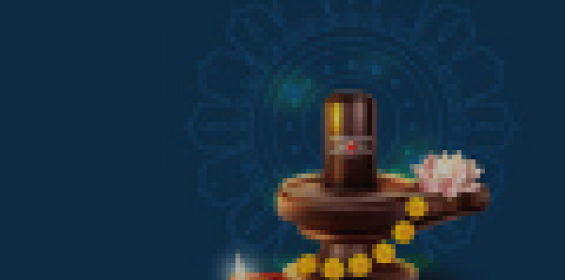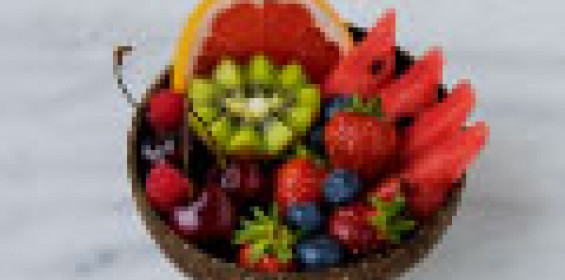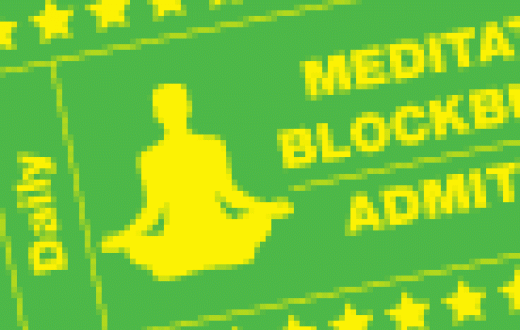What is rudra puja
The most powerful chant:Here’s why you should attend Rudra Puja this Shivaratri
When someone asked Adi Shankaracharya what is that one thing that can give you liberation as well as all material pleasures and achievements, Shankaracharya replied, “Shri Rudram.”
Shri Rudram or Rudra Puja is a set of mantras that are done to invoke and pay obeisance to the Shiva tattva (Shiva energy/ principle) in the cosmos. These mantras will not only help one grow spiritually, but it will also help one achieve everything else that they desire in their material life. Let’s find out how a Rudra Puja is performed and what are the different aspects of these chants.

What are the components of Rudra Puja?
Shri Rudram consists of five major parts:
- Ganpati Atharvashirsha: Any puja or ritual would not start without invoking Lord Ganesha, the remover of obstacles. Ganpati Atharva is the oldest surviving text on Lord Ganesha that pays obeisance to the elephant-faced god. In this, Ganesha is described as the energy that is same to every other deity, as the ultimate reality and truth (brahman), as Atman (soul in oneself), and as Om, the building block of the universe.
- Anganyas: Anganyas is the process in which one invokes the deity within themselves before they can pray to the deity outside them. Before the Shri Rudram starts, the person performing the puja offers flowers to all the gods and then puts some on their own head. This act is done to recognize that there is the energy of Rudra in themselves. Only after the invocation of Rudra in oneself, one becomes eligible to perform the Rudra Puja.
- Panchamrut Snanam: After Anganyas, the abhishekam (worship) of the Shiva Lingam is done with the panchamrut. The elements of the panchamrut represent the pancha-tattvas (the five elements of which the universe is made - space, air, fire, water, and earth). Shivalinga itself is the symbol of this existence, including all manifest and unmanifest universe.
All the tattvas in this existence are pacified by offering the five components of the panchamrut. These components are - milk, curd, jaggery, honey, and ghee. Offering a mixture of these five over a Shivalinga is symbolic of pacifying the five elements across the existence. It is the harmony within these five elements that allows peace to pervade. So, the Shri Rudram is not done for the benefit of self because worshipping a Shivalinga is like worshipping the entire existence.
- Namakam: Namakam is recognizing the presence of Shiva tattva in everything. As per quantum physics, we are all made up of the same energy. This part of Rudram is done to recognize that the same energy pervades in everyone and everything. For example, obeisance is paid even to the bow and arrows of the Rudra. At one place, the chant mentions:
Vanchate Parivanchate, taskaranaye namo namaha
Here, the Rudra is worshipped in the form of thieves and smugglers. This is to recognize that Rudra, the energy that is omnipresent, is in the best of the best and the worst of the worst.
- Chamakam: In this, we recognize that all of the things present in the existence are within us. So, that tattva or Rudra is present everywhere and everything that contains that energy is within me. And here we worship the presence of that Rudra within us.
The last part of the Rudra Puja is done differently in different parts of India. In the northern regions, Shri Rudram ends with Purush Sukta. At some places, like The Art of Living International Center, it ends with Durga Sukta. These mantras praise the Divine Goddess in the form of Durga. Unless we worship Durga, worshipping of the Shiva is incomplete. Before starting the Rudram, one worships the Rudra within oneself. And after being the Rudra, we have to worship the goddess in her Durga form, who represents all the manifest universe.
Why is the Rudra Puja important?
Since Vedic times, it has been known that Rudra Puja is the most powerful tool to bring peace in the environment. In all the Shankaracharya Parampara (the wisdom lineage of Shankaracharya), one thing that has been followed with utmost discipline and commitment, is common across all the paramparas, is the Monday Rudra Puja. All Shankaracharyas perform the Monday Rudra Puja in their own particular way. This is the reason that Adi Shankaracharya established four peethas (knowledge centers) in four corners of the country so that with these practices, there is prevalence of peace across the country and the world. To maintain the peace and harmony in nature, Shri Rudram is performed.
What is the importance of Shri Rudram on Shivaratri Day?
The day of Shivaratri has a very important significance. It is said that the Shiva tattva, the energy is extremely subtle and it is impossible for any conscious being to tap into it by the use of his/ her own intelligence. We have to wait for the grace of that energy to dawn on us. And it is on the day of Shivaratri that the Shiva tattva is very close to the manifest or Shakti. It is on this day when Shiva tattva expresses itself and blesses everything with its grace, pervading in everything at a grosser level. It is so close that by doing certain practices, like chanting or listening to the chants of Shri Rudram, we can have a glimpse, experience the Shiva energy.
When we look at the Shivaratri day astrologically, it is seen that the sun and moon are in such positions that it increases the vaata (imbalance of air and space element). That’s why across the world it is seen that on Shivaratri, people are not able to sit in one place and meditate. Their body and mind demands them to keep doing something. That’s why the day of Shivaratri is kept for celebration and the preparation of that celebration.
After a good celebration, you will find that you can settle down and meditate and really rest in the experience of the Shiva tattva. Night is meant as the time to rest and that is the reason it is called Shivaratri (night of the Shiva) and not Shivadivas (Day of the Shiva). It is at night that you can rest in the Shiva tattva. So, throughout the day you celebrate and prepare for the night and when your vaata settles down, then you can go deeper in meditation and experience the joy that the Shiva tattva has to offer.
What are the benefits of attending Rudra Puja?
The Rudras are classified as Ekadash Rudra (the eleven Rudras) and these eleven are present in our existence as eleven different wins. There are also eleven different organ systems in our body. When these wins are pacified at a deeper level, a deep wisdom dawns in us. There are many benefits of sitting in the Shri Rudram, but chief amongst them is the feeling of peace and harmony. Here are how these benefits can affect you at an individual level.
- Students - As mentioned above, the pacifying effect of Shri Rudram brings up a deep wisdom in us. For students, this is essential because nowadays studying has become only learning certain things and then vomiting it in the exams. But when wisdom dawns, a student will be able to identify how all the knowledge can be applied for a larger purpose. Students can become more adept at application of knowledge.
- Businessmen - When we are deeply calm inside then the power of intuition dawns in us. One thing that makes a businessman stand out or grow better than others is how intuitive that person is. Shri Rudram helps that intuition to work better. Of course, it is not just dependent on Rudra Puja. Rudram brings that deep calmness within us but doing certain practices regularly like Sudarshan Kriya and meditation is needed to bring out that intuitive faculty within us.
- Working women - Working women have to manage a lot more things as compared to men. They have to manage their house, their children, their children’s homework, and their individual office work as well. Women are anyway better than men at multitasking but to be able to do all these things yet remain calm requires a lot of inner strength. And this inner strength can be developed through Rudram chanting and participating in the Rudra Puja, especially on Shivaratri.
- Leaders - Be it business leaders or political leaders, they always have to manage a team. And to manage a team well, one cannot afford to be impulsive. As Gurudev Sri Sri Ravi Shankar once said, a leader has to lead from the back and not the front. To lead from the back, it requires a lot of depth of character. Consistent performance and/or participation in Rudra Puja helps develop this unshakable depth within.
- Youth - the adolescents and young-adults face a lot of hormonal and emotional turbulence as they grow up. Participating in the Shri Rudram on Shivaratri day will help them attain a lot of peace within them. And when you are settled in your mind, instead of being bothered by situations, the hormonal changes, impulses, and passions that arise in you, you will be able to use them in a very constructive manner.
What is the importance of Rudram Sankalpa?
The literal meaning of sankalpa is commitment. Usually we take a commitment towards a cause but when we talk about the Rudram Sankalpa, in this we are offering the Sankalpa to the Rudra Puja. Sankalpa is that desire/commitment or that something that you want to happen with you, it is something that is your deepest intention. If you hold on to it, if you keep thinking about it then you will become feverish about it, get frustrated and that result might not happen. One thing that makes things happen is the faith that what you want will happen.
Offering a sankalpa works in the same way. As a symbol of your intention/desire, you take some rice and flowers in your hand and then you offer them to the divine power with the intention that you want this to happen. You offer that sankalpa to the divine with the faith that either this will happen or something better than this will happen with me. After doing this, you can feel relaxed and free from the feverishness, enjoying the confidence that either this or something better is going to happen. That faith gives the sankalpa the power to manifest.
Suggested Powerful Chants of Shiva
Based on inputs from Ashutosh Chawla, Head, Jyotish and Vastu, Vaidic Dharma Sansthan.
Inspired from the wisdom talks by Gurudev Sri Sri Ravi Shankar.
We’d love to hear from you.
Leave your comments @artofliving.
To watch LIVE webcast of Mahashivratri celebrations with Gurudev on February 21st, click here.
To take sankalpa, register here.
To know more about this special day, visit here.
FAQ's on Rudra Puja
Shri Rudram or Rudra pooja liberates us and provides material pleasures and achievements. Rudra Puja is the most powerful tool to bring peace to the environment. It liberates us and provides material pleasures and achievements.
Rudra puja is the most powerful tool to bring peace to the environment. It liberates us as well as provides material pleasures and achievements.
Students can become more adept at the application of knowledge.
The businessmen become calmer with Rudra puja so that the power of intuition dawns on them.
Working women gain the inner strength from the Rudra puja to be efficient multitaskers.
Leaders develop unshakable depth to manage a team with the participation in Rudra puja.
Youth get settled in their mind instead of being bothered by situations, hormonal changes, impulses, and passions that arise in them.
Shri Rudram or Rudra Puja is a set of mantras to invoke and pay obeisance to the Shiva tattva (Shiva energy/ principle) in the cosmos. These mantras will not only help one grow spiritually, but they will also help one achieve everything else that they desire in their life.
Rudrabhishek is an ancient chanting downloaded from the Aakasha (space). When the ancient sages and Rishis sat in meditation, they heard and transferred to other people. Rudrabhishek creates positive energy and removes negative vibes. When Rudrabishek happens, nature flourishes and becomes joyful.
Yes, you can perform Rudrabhishekam at home.
We chant the Rudram chants to pray to Rudra. Shri Rudram or Rudrabhishekam or simple chanting of Om, Na, Ma, Shi, Va, and Ya. It represents all five elements. Shri Rudram has five components - Ganpati Atharvashirsha, Anganyas, Panchamrut Snanam, Namakam and Chamakam.
Rudra means a roaring storm, fiery red, or fire. It seems Rudra is a fiery aspect of Shiva, which is destruction. Shiva is an innocent aspect of Lord Shiva. But Shiva is called Rudra in Rudrabhishek or Rudram puja. The chants in Rudra pooja praise him as the supreme one who is the one point of origin of the entire universe. Rudra is the final destination of the entire universe in which it merges back after dissolution.
Shiva created 11 Rudras on Brahma's request. They are:
Kapali
Pingala
Bhima
Virupaksa
Vilohita
Ajesha
Shasana
Shasta
Shambhu
Chanda
Dhruva
According to Matsya Purana, the eleven Rudras are:
Nirriti
Shambhu
Aparajita
Mrigavyadha
Kapardi
Dahana
Khara
Abhirabradhya
Kapali
Pingala
Senani
The Matsya Purana mentions the ferocious eleven Rudras. These Rudras aid God Vishnu in his fight against the demons.
Kapali
Pingala
Bhima
Virupaksa
Vilohita
Ajesha
Shasana
Shasta
Shambhu
Chanda
Dhruva
As per Vishnu purana, the eleven Rudras are:
Manyu
Manu
Mahmasa
Mahan
Siva
Rtudhvaja
Ugraretas
Bhava
Kama
Vamadeva
Dhrtavrata
In the epic Mahabharata, the eleven Rudras are:
Mrgavadha
Sarpa
Nirriti
Ajaikapad
Ahi
Budhnya
Pinakin
Dahana
Ishvara
Kapali
Sthanu
Bhaga
In the epic Mahabharata, in one instance, there are eleven thousand Rudras. The eleven groups of hundred are named:
Manyu
Manu
Mahinasa
Mahān
Śiva
Ṛtadhvaja
Ugraretā
Bhava
Kāla
Vāmadeva
Dhṛtavrata
Monday is the auspicious day of Lord Shiva. You can also perform daily Shiva pooja at home. Pooja means honoring all the five elements, born out of fullness. So, fire, water, incense sticks, fruits, flowers, rice, whatever nature has given to us, those things are used, and the chanting goes on. Milk and water run through the crystal of Shivalinga, drop by drop. It is the ancient method of Shiva puja. Light an oil lamp and place it on the altar in your home. Do a few rounds of Nadi Shodhan, dhyana (meditation), and Chant 'OM Namah Shivaya' as many times as you can.
It varies from person to person. It depends on your devotion and love for learning and chanting Rudram. With repeated consistency, you will be able to chant Rudram.
All five elements are used in pooja. Pooja means honoring all the elements, born out of fullness. So, fire, water, incense sticks, fruits, flowers, rice, whatever nature has given to us, those things are offered to Lord Shiva and the chanting goes on. Milk and water run through the crystal of Shivalinga, drop by drop. This is the ancient method of Shiva puja.
Once Brahma asked Shiva to create some beings as he was getting bored by creating ordinary beings. So Shiva created 11 Rudras: Kapali, Pingala, Bhima, Virupaksa, Vilohita, Ajesha, Shasana, Shasta, Shambhu, Chanda and Dhruva.
The Vishnu Purana portrays Rudra as Shiva. The enraged Rudra was in Ardhanari form. A large portion of his body was male and another half female. The male form split itself into eleven Rudras. Some of the Rudras were white and delicate. The other Rudras were dark and furious. The female gave birth to the eleven Rudranis became the wives of the Rudras.
Rudra means a roaring storm, fiery red, or fire. It seems Rudra is the fiery aspect of Shiva, which is destruction. Shiva is an innocent aspect of Lord Shiva. But Shiva is called Rudra in Rudrabhishek or Rudram puja. The chants in Rudra pooja praise him as the supreme one who is the one point of origin of the entire universe. Rudra is also conceived as the final destination of the entire universe in which it merges back after dissolution.







































